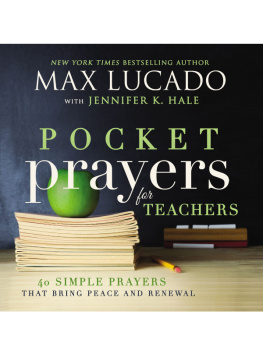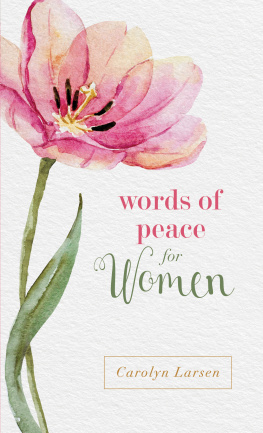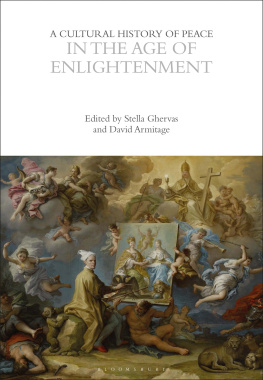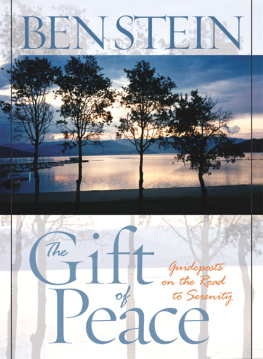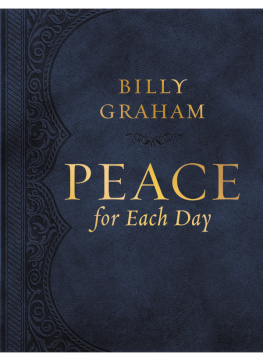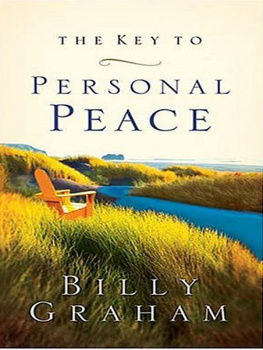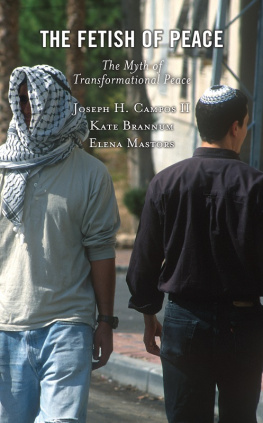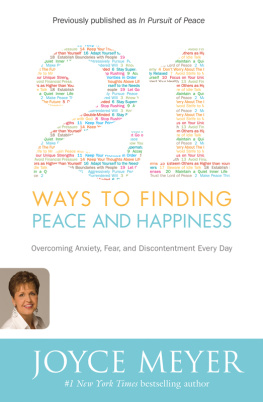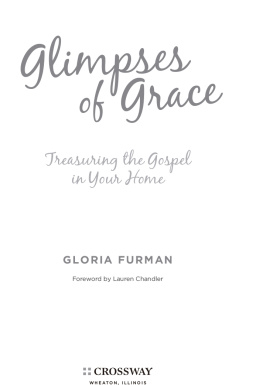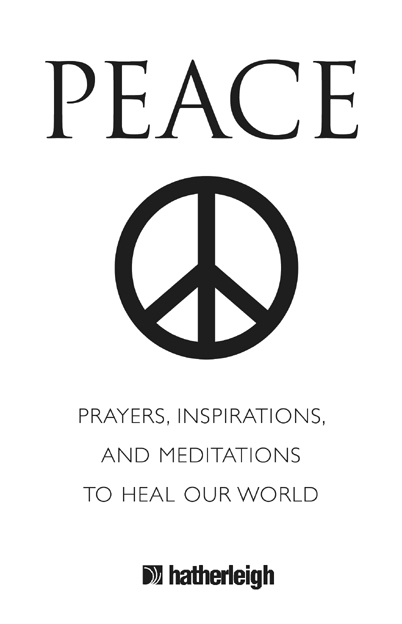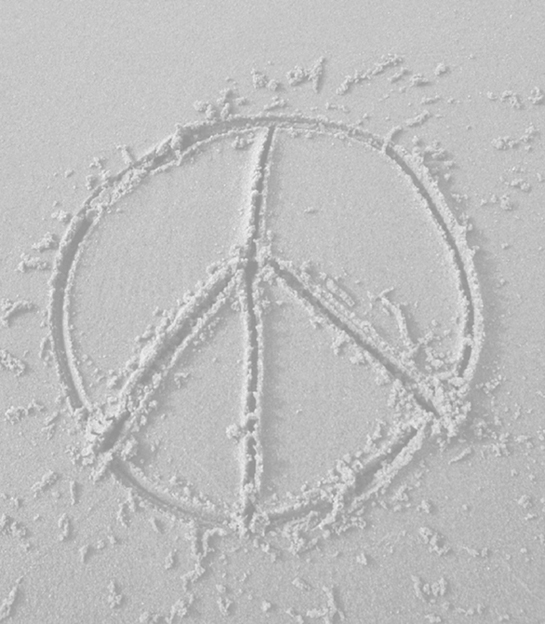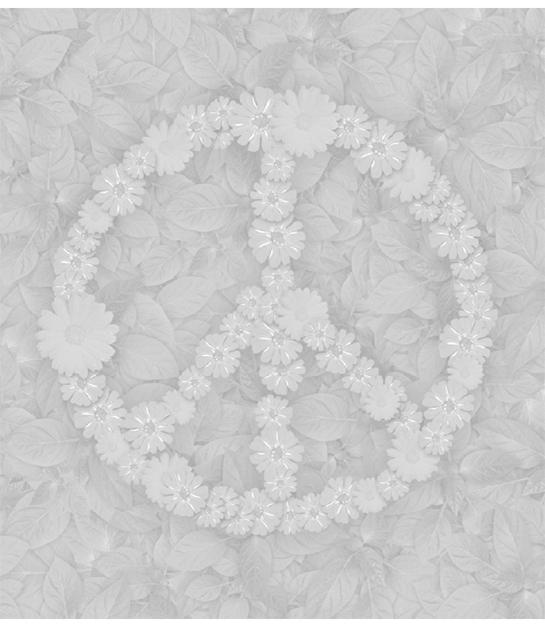
Hatherleigh Press is committed to preserving and protecting the natural resources of the earth. Environmentally responsible and sustainable practices are embraced within the companys mission statement.
Visit us at www.hatherleighpress.com and register online for free offers, discounts, special events, and more.
Peace
Text copyright 2013 Hatherleigh Press
Library of Congress Cataloging-in-Publication Data is available upon request.
ISBN: 978-1-57826-465-0
eBook ISBN: 978-1-57826-466-7
All rights reserved. No part of this book may be reproduced, stored in a retrieval system, or transmitted, in any form or by any means, electronic or otherwise, without written permission from the publisher.
Cover and Interior Design by Carolyn Kasper
v3.1
CONTENTS
PUBLISHERS NOTE
W HAT IS PEACE ? What is its purpose, spiritually, emotionally, and globally?
The cornerstone of civilization, peace allows all nations to grow and thrive while enabling individuals to learn and develop together. There is no goal more desirable, and many great men and women have given their lives in its pursuit.
Peace grounds this concept in its cultural contexts and explores it through the thoughts and words of humanitys greatest peacemakers through quotes, prayers, and meditations on the subject of unity. Words spoken in favor of peace are among the most powerful sentiments ever expressed by man. Peace captures and applies this meaning to provide inspiration and practical guidance towards leading a life of unity and harmony.
The approach of joining the abstract and the concrete, the idealistic and the practical, makes Peace a book that is not just about peace; it is itself a tool for the promotion of harmony and unity in our lives, in our selves, and in our world.
Peace begins with a smile.
M OTHER T ERESA
INTRODUCTION
WHAT IS
PEACE?
peace (noun)
1. a state of tranquility or quiet as a) freedom from civil disturbance b) a state of security or order within a community provided for by law or custom peace>
2. freedom from disquieting or oppressive thoughts or emotions
3. harmony in personal relations
4. a) a state or period of mutual concord between governments b) a pact or agreement to end hostilities between those who have been at war or in a state of enmity
5. used interjectionally to ask for silence or calm or as a greeting or farewell
6. at peace
7. in a state of concord or tranquility
M ERRIAM -W EBSTER
C LOSE YOUR EYES for a moment, and think about the word peace. What comes to mind?
Perhaps your first thought about peace is in terms of its opposite: conflict, war, or injustice, with peace as the goal for a better way to live. Maybe a symbol or image pops into your head, such as the olive branch (an ancient symbol for peace), a dove, the V peace sign, the circular peace symbol, or thousands of folded paper cranes.
You may think of peace in terms of your own peace of mind or well-being, and feel that peace is elusive. Perhaps you feel that life is stressful and conflicted, and wish that a sense of peace was something you could experience more often.
Maybe God or another higher power enters your thoughts; many of us know peace in the context of religious beliefs or spiritual practices. Or a sense of peace could be something youve experienced first-hand in nature, at a special place, or during a time when you were close to someone else. You may feel that there arent really any words to describe that feeling of peace.
Although a clear-cut definition of peace may differ from person to person, the concept of peace has existed for centuries; across cultures, civilizations, and around the world. Mankind has been on a search for peace for millennia. And despite the fact that we may sometimes experience peace as a feeling or a state that we cant quite put into words, the desire for peace, within ourselves, our relations with each other, and with the earth we inhabit, is very real. Truly, our souls thirst for peace. So how can we find it?
This book is all about broadening your understanding of peace so that you can accept it as an active force in your life; so that you may welcome it as a restorative, meaningful state of being that is available to you at any time. Peace isnt about waving a magic wand and creating a world where everyone gets along with everyone else. And living in peace isnt about meditating alone on a mountaintop or sacrificing our way of life. Seeing peace this way is a mistake, because it robs us of our own, unique power to bring about change with small steps, every day. If each of us works for the greater good, in whatever way is best for us given our abilities, skills, and resources, we can make change happen. Working for peace, and knowing peace, is something we can weave into our daily lives no matter what we do.
Each one of us has the right to define what peace means for us on a personal level and in the world around us. Even if that concept of peace is always evolving, ever-changing, one thing is clear: welcoming peace into our lives, and working to make it a part of who we are, is vital to our health and well-being and the only path to truly improving the world around us. The power of peace is present in all of us, and using it enriches our lives, everyday.
May this book be a tool that helps you welcome peace into your life.
PEACE IN LANGUAGES AROUND THE WORLD
The word peace is in the vocabulary of nearly every language around the world. Here are just a few ways to say peace:
Afrikaans (South Africa): Vrede
Armenian: Khaghaghutyun
Eskimo (Native American/Greenland): Erkigsnek
French: Paix
Gaelic (Ireland): Sith
Greek: Irini, Irene
Hawaiian: Maluhia
Hebrew (Israel): Shalom
Hindi (India): Shantih
Italian: Pace
Japanese: Heiwa
Korean: Phyonghwa
Native American, Abenaki: Okikiamgenoka
Native American, Blackfoot: Innaaissttiiya
Spanish: Pax
Zulu (South Africa): Ukuthula
INSPIRATIONAL
QUOTES


